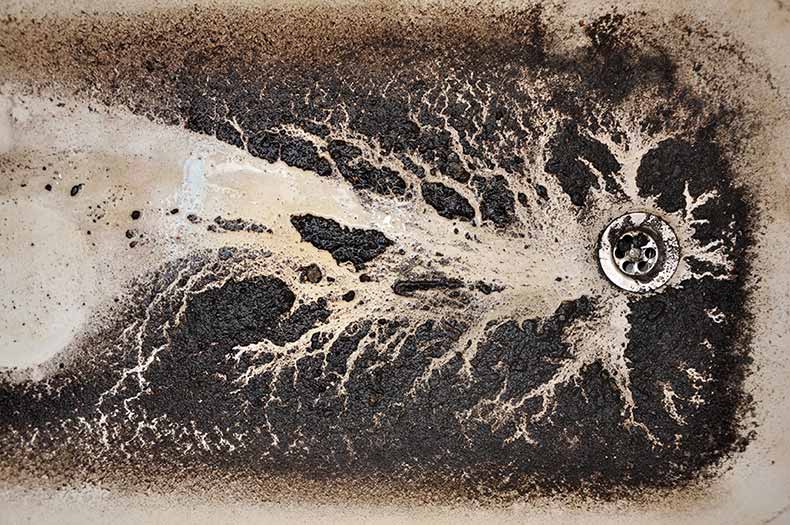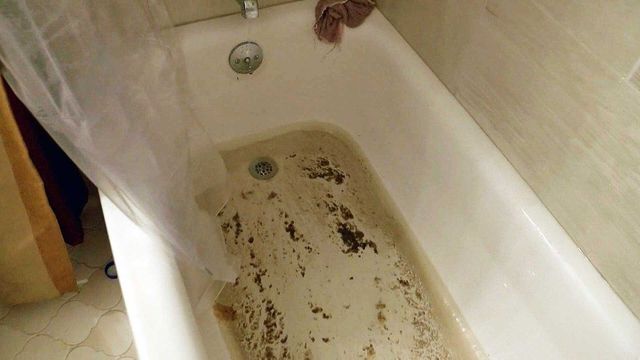An Guide to Sewage Emergence in the Bathtub
An Guide to Sewage Emergence in the Bathtub
Blog Article
What are your insights and beliefs about Why sewage is coming up through your bathtub?

Sewer backup in the tub can be an upsetting and unsanitary trouble for any type of home owner. Not only is it inconvenient, but it additionally poses severe health and wellness risks and shows underlying concerns with the plumbing system. Recognizing why sewage is turning up with the tub is crucial for taking appropriate activity to deal with the trouble properly.
Intro to the Concern
Understanding the Problem
When sewage starts backing up right into the tub, it's a clear sign of an issue with the drainage system. The wastewater that ought to be moving far from your home is rather locating its way back into your living space, which can cause substantial damages and health hazards.
Possible Causes
Numerous factors can add to sewer back-up in the bathtub. From clogs in the sewer line to issues with the plumbing infrastructure, recognizing the source is essential for discovering a service.
Typical Reasons for Sewage Backup
Blockages in the Sewage System Line
One of the most typical sources of sewer backup is a clog in the sewage system line. This can occur due to the build-up of particles, grease, or foreign objects in the pipes, preventing appropriate flow and creating sewage to support right into your bathtub.
Tree Origin Invasion
Tree origins looking for dampness and nutrients can penetrate sewage system lines through small splits or joints. Over time, these origins can grow and broaden, causing substantial damage to the pipelines and bring about sewer backup problems.
Aging Framework
Older homes may have dated plumbing systems that are extra vulnerable to corrosion, cracks, and damage. As pipelines age, they become extra susceptible to leakages and clogs, raising the likelihood of sewage backup occurrences.
Heavy Rainfall or Flooding
Throughout periods of heavy rainfall or flooding, the drain system may become overwhelmed with excess water, creating back-ups and overflows. This can result in sewer backing up into tubs and other fixtures inside the home.
Health Risks Associated with Sewer Back-up
Contamination of Water
Sewer back-up can contaminate the supply of water in your house, posing a severe health and wellness threat to you and your household. Exposure to polluted water can result in stomach concerns, skin infections, and various other ailments.
Spread of Condition
Sewage consists of hazardous microorganisms, infections, and parasites that can create a range of diseases, including liver disease, cholera, and gastroenteritis. Coming into contact with sewer or infected surfaces places you in danger of infection.
Mold and mildew Development
Dampness from sewer back-up can create excellent problems for mold and mildew development in your home. Mold and mildew spores can intensify respiratory system issues and trigger allergies in sensitive people, making punctual clean-up vital.
Indicators of Sewer Back-up
Foul Odors
Unpleasant odors emanating from drains or components, specifically in the washroom, may suggest sewer back-up problems. These odors are typically solid and persistent, indicating an issue that needs prompt focus.
Slow Draining Fixtures
Bathtubs, sinks, and commodes that drain pipes slowly or otherwise in any way could be experiencing sewer backup. If numerous components are affected all at once, it's most likely that the issue originates from an usual factor, such as the main sewage system line.
Gurgling Noises
Strange gurgling or gurgling noises coming from drains pipes when water is running elsewhere in the house are a measure of air caught in the plumbing system. This air buildup can result from sewer back-up and need to be examined immediately.
Immediate Actions to Take
Shutting Off Water Supply
In the event of sewage backup, it's essential to turn off the water to avoid more contamination and damages. Locate the primary water shutoff valve in your house and shut it off till the issue can be solved.
Calling an Expert Plumber
Taking care of sewage backup is not a DIY work. Get in touch with an accredited plumber with experience in taking care of sewage-related problems to analyze the scenario and do necessary repair work or cleanups.
Staying Clear Of Contact with Polluted Water
Till the sewage back-up is dealt with, prevent contact with infected water to prevent the spread of bacteria and microorganisms. Put on protective equipment if you must remain in the damaged area and clean your hands thoroughly afterward.
Preventive Measures
Normal Maintenance of Sewer Lines
Schedule normal evaluations and upkeep of your sewage system lines to recognize and address possible concerns prior to they rise right into significant issues. This can include clearing out particles, checking for tree origin invasion, and repairing any damaged pipelines.
Mounting Backwater Valves
Take into consideration mounting backwater shutoffs in your plumbing system to prevent sewage from flowing back into your home during durations of heavy rainfall or flooding. These shutoffs instantly close when water draws back up, securing your property from contamination.
Correct Disposal of Home Waste
Avoid purging anything apart from toilet tissue and human waste down the commode to stop obstructions and blockages in the sewage system line. Dispose of oil, oil, and other house chemicals effectively to reduce the risk of plumbing troubles.
Cleaning Up After Sewage Back-up
Sanitation Procedures
Completely decontaminate and disinfect impacted areas after sewage back-up to remove damaging germs and prevent mold growth. Usage suitable cleansing products and protective gear to ensure safe and effective cleaning.
Remediation of Influenced Locations
Repair any kind of damages to floor covering, wall surfaces, or fixtures triggered by sewage backup. Relying on the extent of the damage, you may need to change carpeting, drywall, or other products to restore your home to its pre-loss problem.
Why Is Water Backing Up in My Bathtub When I Flush My Toilet?
What to do about a sewer line clog
First, don’t bother with plunging. No amount of plunging will dislodge the clog in a sewer line. The clog is too far away. Plungers are for clogs in the toilet itself, not the sewer line. Plus, the most likely causes of a sewer clog are:
Tree roots Flushed toys or feminine products Grease buildup Those items don’t move easily. And in the case of tree roots, the roots need to be cut out of the pipe and the pipe will need to be repaired.
You’ll need a closet auger. A closet auger is a type of plumber’s snake with a protective cover to keep from scratching the delicate porcelain toilet. If the clog is further down, you may need to remove the toilet or use one of your cleanouts to get to the clog.
We also recommend doing a video inspection of the drain to ensure that the cause of the clog has been completely removed. Otherwise, you could have the same problem again in a few days or weeks.
https://mspplumbingheatingair.com/blog/why-is-water-backing-up-in-my-bathtub-when-i-flush-my-toilet

Hopefully you liked our section about Water Coming up Bathtub Drain. Thank you so much for spending some time to read our article post. Sharing is good. You never know, you may very well be helping someone out. We treasure your readership.
Course Detail
Report this page